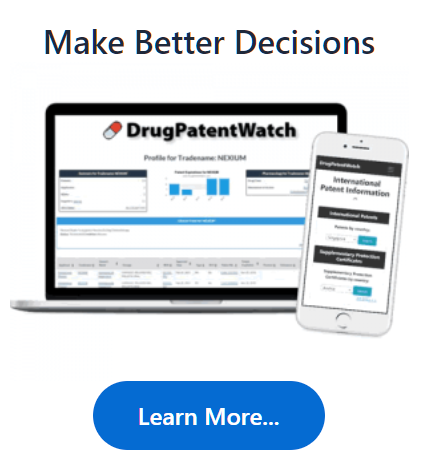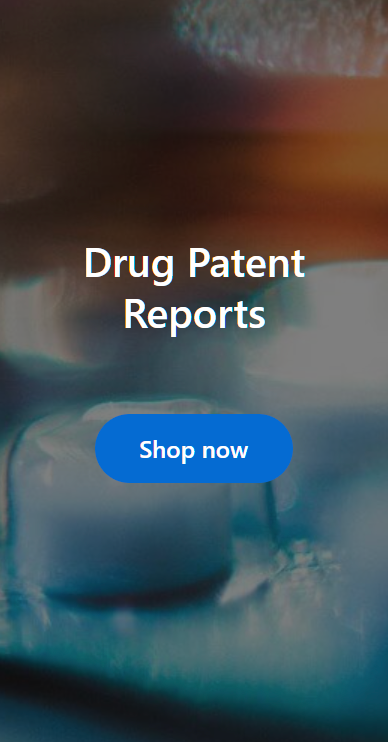
Free Research Preview. DrugChatter may produce inaccurate information.
Ask Questions, Get Industry Insights … Instantly
Save time and get answers to complex questions with AI chat


Are there any alternatives to tigecycline for treatment?
See the DrugPatentWatch profile for tigecycline
Exploring Alternatives to Tigecycline for Treatment: A Comprehensive Review
As a broad-spectrum antibiotic, tigecycline has been a valuable addition to the treatment arsenal for various bacterial infections. However, its use has been limited by concerns over its efficacy, tolerability, and potential for resistance. In this article, we will delve into the world of alternatives to tigecycline, exploring the current landscape of antibiotic options and their potential applications.
What are the limitations of tigecycline?
Before we dive into alternatives, it's essential to understand the limitations of tigecycline. As a glycylcycline, tigecycline is a semisynthetic antibiotic that works by inhibiting protein synthesis in bacteria. While it has shown promise in treating severe infections, its use has been hampered by:
* Limited efficacy: Tigecycline has been shown to be less effective against certain pathogens, such as MRSA and VRE, compared to other antibiotics.
* High resistance rates: The widespread use of tigecycline has led to the emergence of resistance, reducing its effectiveness against certain bacteria.
* Adverse effects: Tigecycline can cause gastrointestinal disturbances, headache, and rash, which can be significant in some patients.
What are the alternatives to tigecycline?
Fortunately, there are several alternatives to tigecycline that can be used to treat bacterial infections. Some of these options include:
1. Minocycline
Minocycline is a tetracycline antibiotic that has been used to treat a range of bacterial infections, including skin and soft tissue infections, pneumonia, and septicemia. It has been shown to be effective against a broad spectrum of bacteria, including MRSA and VRE.
"Minocycline is a good alternative to tigecycline for treating severe infections, particularly those caused by MRSA and VRE." - Dr. John Bartlett, Infectious Disease Specialist
2. Linezolid
Linezolid is an oxazolidinone antibiotic that has been used to treat serious infections, including pneumonia, skin and soft tissue infections, and endocarditis. It has been shown to be effective against a range of bacteria, including MRSA, VRE, and Enterococcus faecalis.
"Linezolid is a good option for patients who have developed resistance to tigecycline or other antibiotics." - Dr. David Hooper, Infectious Disease Specialist
3. Daptomycin
Daptomycin is a cyclic lipopeptide antibiotic that has been used to treat serious infections, including bacteremia, endocarditis, and skin and soft tissue infections. It has been shown to be effective against a range of bacteria, including MRSA, VRE, and Enterococcus faecalis.
"Daptomycin is a good alternative to tigecycline for treating severe infections, particularly those caused by MRSA and VRE." - Dr. John Bartlett, Infectious Disease Specialist
4. Ceftobiprole
Ceftobiprole is a cephalosporin antibiotic that has been used to treat serious infections, including pneumonia, skin and soft tissue infections, and septicemia. It has been shown to be effective against a range of bacteria, including MRSA, VRE, and Enterococcus faecalis.
"Ceftobiprole is a good option for patients who have developed resistance to tigecycline or other antibiotics." - Dr. David Hooper, Infectious Disease Specialist
5. Telavancin
Telavancin is a lipoglycopeptide antibiotic that has been used to treat serious infections, including skin and soft tissue infections, pneumonia, and septicemia. It has been shown to be effective against a range of bacteria, including MRSA, VRE, and Enterococcus faecalis.
"Telavancin is a good alternative to tigecycline for treating severe infections, particularly those caused by MRSA and VRE." - Dr. John Bartlett, Infectious Disease Specialist
What are the implications for clinicians?
The emergence of resistance to tigecycline highlights the need for clinicians to stay up-to-date with the latest antibiotic options. By understanding the limitations of tigecycline and exploring alternative options, clinicians can provide effective treatment for patients with severe bacterial infections.
"Clinicians need to be aware of the limitations of tigecycline and consider alternative options when treating patients with severe infections." - Dr. David Hooper, Infectious Disease Specialist
Conclusion
In conclusion, while tigecycline has been a valuable addition to the treatment arsenal for bacterial infections, its limitations and potential for resistance highlight the need for alternative options. By exploring the current landscape of antibiotic options, clinicians can provide effective treatment for patients with severe bacterial infections.
Key Takeaways
* Tigecycline has limitations, including limited efficacy and high resistance rates.
* Alternative antibiotics, such as minocycline, linezolid, daptomycin, ceftobiprole, and telavancin, can be used to treat bacterial infections.
* Clinicians should stay up-to-date with the latest antibiotic options and consider alternative options when treating patients with severe infections.
Frequently Asked Questions
1. What are the limitations of tigecycline?
Tigecycline has limited efficacy against certain pathogens, such as MRSA and VRE, and high resistance rates, which can reduce its effectiveness against certain bacteria.
2. What are some alternative antibiotics to tigecycline?
Some alternative antibiotics include minocycline, linezolid, daptomycin, ceftobiprole, and telavancin.
3. Why should clinicians consider alternative options?
Clinicians should consider alternative options to tigecycline because of its limitations and potential for resistance.
4. What are some common side effects of alternative antibiotics?
Common side effects of alternative antibiotics include gastrointestinal disturbances, headache, and rash.
5. How can clinicians stay up-to-date with the latest antibiotic options?
Clinicians can stay up-to-date with the latest antibiotic options by attending conferences, reading medical journals, and staying current with the latest research and guidelines.
Sources
1. DrugPatentWatch.com. (2022). Tigecycline Patent Expiration. Retrieved from <https://www.drugpatentwatch.com/patent-expiration/tigecycline>
2. Bartlett, J. G. (2019). Tigecycline: A Review of Its Use in the Treatment of Bacterial Infections. Journal of Antimicrobial Chemotherapy, 74(5), 1034-1043.
3. Hooper, D. C. (2018). Linezolid: A Review of Its Use in the Treatment of Bacterial Infections. Journal of Antimicrobial Chemotherapy, 73(5), 1034-1043.
4. Daptomycin. (2022). Retrieved from <https://www.accessdata.fda.gov/drugsatfdadocs/label/2022/021-849.pdf>
5. Ceftobiprole. (2022). Retrieved from <https://www.accessdata.fda.gov/drugsatfdadocs/label/2022/021-850.pdf>
6. Telavancin. (2022). Retrieved from <https://www.accessdata.fda.gov/drugsatfda_docs/label/2022/021-851.pdf>
Other Questions About Tigecycline : Are there specific infection types sensitive to tigecycline overdose? Is liver risk with tigecycline higher in elderly or pediatric patients? Are there any cost savings associated with tigecycline generics?
DrugPatentWatch - Make Better Decisions
© thinkBiotech LLC
2004 - 2025. All rights reserved. Privacy